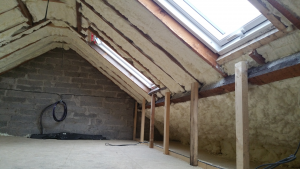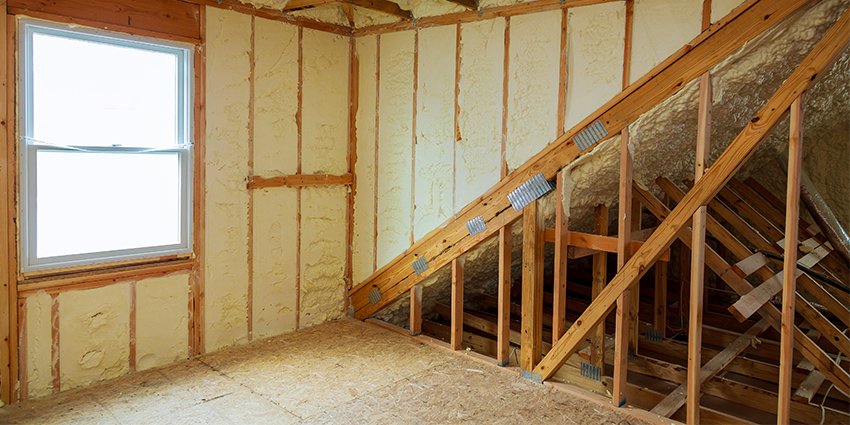Attic Spray Foam Insulation Blessington
Spray Foam Insulation Blessington
3 Bed Semi Attic Insulation Blessington
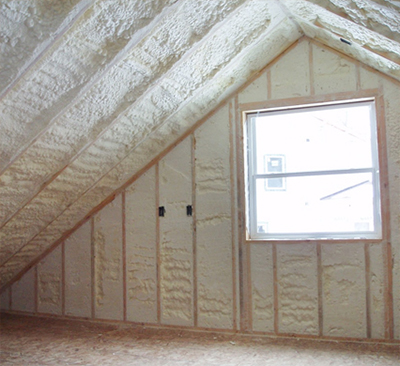
Attic Insulation Blessington
Spray foam works in many different conditions. Spray foam is beneficial for roofs, windows or exterior walls.
Spray foam insulation will not only keep you home warm in winter, but will also keep it cool during the summer. It allows moisture-laden air, such as from the basement, to escape thanks to its structure and cell structure.
Benefits of Spray Foam Insulation for your home
Other applications include farm houses, industrial and commercial buildings, sheds as well shipping containers and vessels.
It also creates a shield around your house that keeps out the rain and cold wind. Other insulating products available today are far less effective in this regard. They allow heat to escape your home.
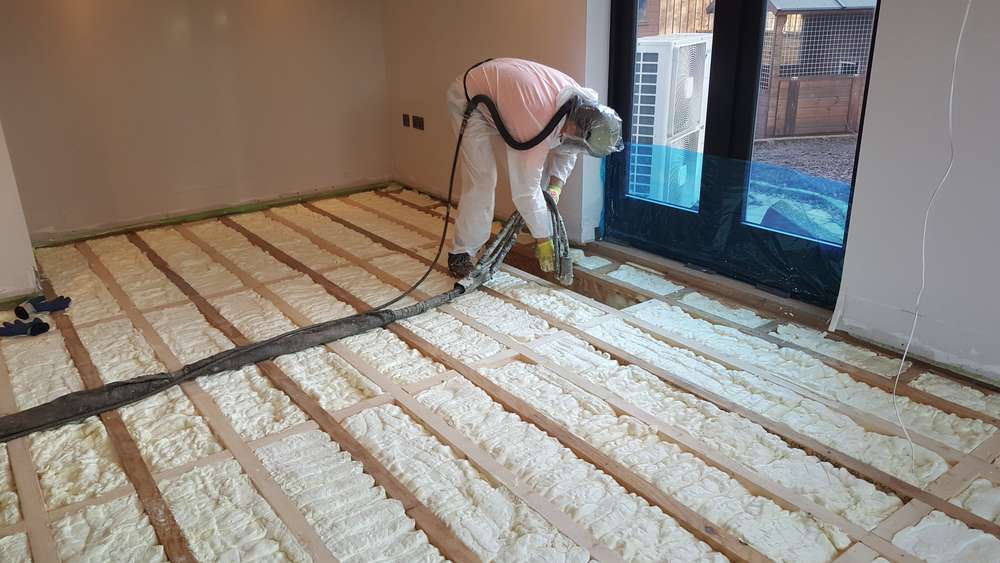
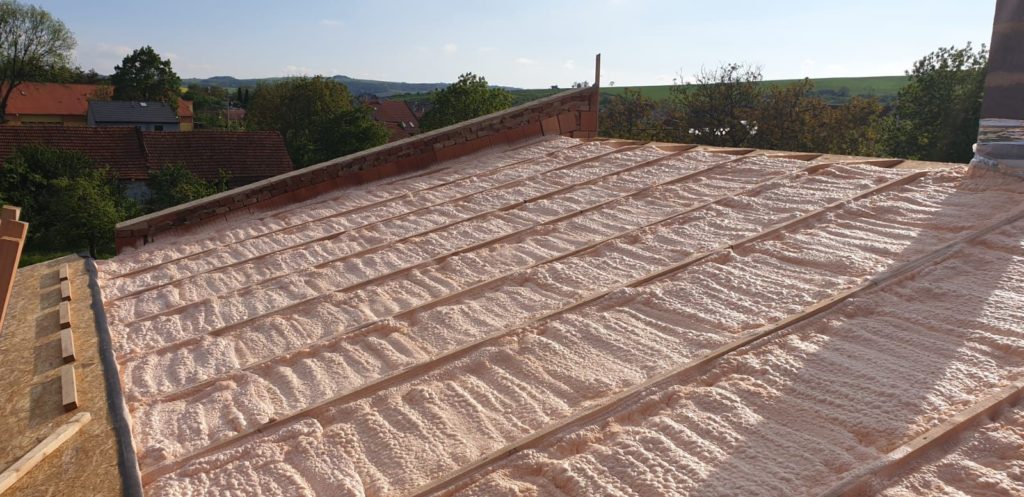
Cost Price Of Spray Foam Insulation
Spray foam insulation has proven to be the most effective insulation material on the market today. Spray foam insulation has a higher U.Value than conventional insulating materials, such as fiberglass, rock wool, cellulose, and polystyrene board.
Spray foam insulation also works well as an sound barrier. Spray foam insulation reduces outside noise significantly. It is a great advantage if a company or home is in a densely populated area or close to an airport.
Insulate Your Blessington Property Properly
It is often used to reduce sound travel from one room to another or between floors within the walls. It is particularly useful in bathrooms, where the noises of flushing toilets and showers can be annoying.
It’s simple to use, and it doesn’t disrupt your everyday activities.
An Irish traditional home can be insulation in one day.
Encasing the pipes and insulation reduces noise coming from under-floor or in-wall piping.
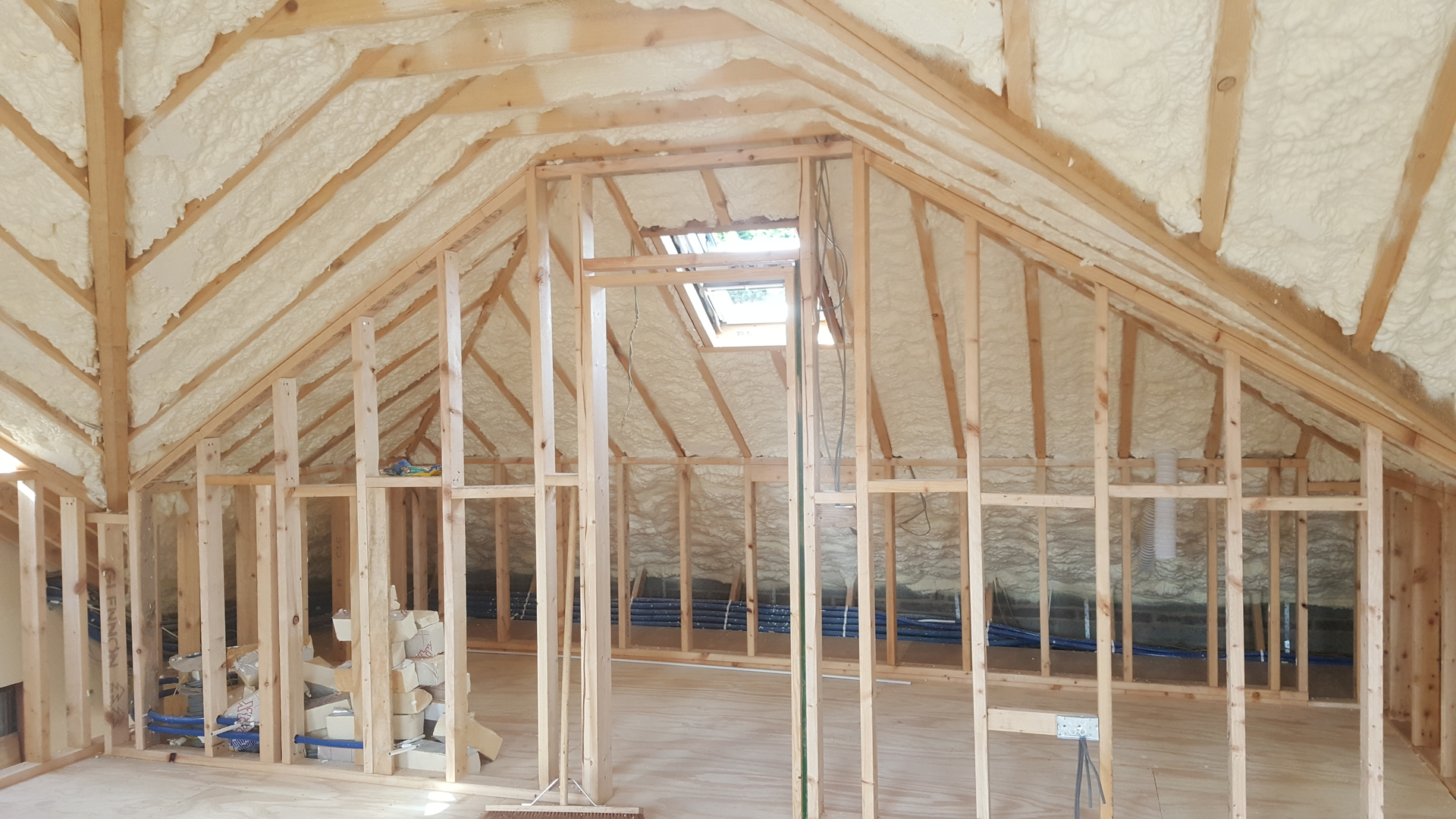
If you plan on using the loft/attic as storage space, you should lay boards above the joists. The insulation will not be thick enough if it is only between the joists.
It reduces sound transference by up to 50% when used in walls, attics and roofs. Because of its dense composition and application process, it creates an airtight envelope. It keeps out sounds from the environment like traffic, pedestrianised streets and homes near airports.
It also blocks sounds from a structure’s walls from reaching other floors, including the floors below. Spray foam insulation could reduce the amount of noises generated by structures such as running showers or washing machines.
Spray foam insulation is flexible but densely packed with millions if minute air bubbles. This will absorb vibrations from the floor as well as the sound waves. Spray foam insulation reduces transmission of airborne sounds by sealing and filling every crevice.
Spray foam insulation also dampens, if it is not eliminated completely, sounds that could originate from beneath a floor such water flowing through pipes. The insulation completely surrounds pipes to prevent them from moving and keeps them secure. It also eliminates the sound caused by hot water flowing through pipes. The heating system heats wooded Joists, causing them to expand, creak and groove.
It also stops heat from escaping to the upper levels, which makes the lower floors cooler and requires more heat to keep them warm.
If the loft is accessible and free from damp or condensation, insulation should be simple. In many cases, you can do it yourself.
Uninsulated homes lose 25% of their heat through their roofs. Insulating your roof, attic, and loft is a good way to reduce heat loss. It will also reduce your heating bill.
If you have access to your loft joists and it is easy to use, mineral wool insulation rolls can be used. The insulation layer is placed between the joists (the horizontal beams that make the loft’s floor) and then another layer is applied at right angles to cover all the joists.
You can raise your floor to provide enough insulation. You can install timber battens on the floor joists. Or, you can use purpose-built legs made of plastic that fit on the leg and support the floor. You should leave enough air space between insulation layers and boards to prevent condensation.
You should not squash the mineral wool while you place the boards on top. This will decrease its insulation value.
Insulation stops heat loss from living spaces. By making your loft space cool, you can prevent damp or condensation from developing. Do not forget to improve ventilation if loft insulation is being installed by you.
The insulation can be fitted between and over the roofing rafters, which are the flat timbers that support the roof. You have two options: rigid insulation boards that are carefully cut to your specifications or foam insulation spray between the rafters.
Some companies may offer to repair your roof with foam insulation. We don’t recommend this. Before you add insulation to your roof, make sure it is in good shape.
If you are looking to use your loft as an indoor heating room, you can create a space in the roof.
You will need to insulate the loft walls and ceilings if you intend to use it as your living space.
For your home to remain fresh, dry, healthy and clean, it needs air flow. Good installers will ensure that there is no obstruction or sealing of any inadvertent ventilation. You should not cover vents, grilles, or airbricks when you are doing DIY insulation.
A professional can install blown insulation in a loft that is difficult to reach. They will use special equipment to blow the appropriate insulation material into any space. They might use treated cellulose, mineral wool fibre or polyurethane foam.
Flat roof insulation may save you the same amount as loft insulation on your heating bills. The amount of flat roofing on a property will determine how much savings you get.
If the loft is accessible, has no damp problems, and is not on a flat roof you can likely insulate it yourself. If there are damp issues or more complex insulation needs, a professional should be hired.
Cooler air could cause cold draughts to enter your loft hatch due to insulation. Fit an insulated roof hatch and place strips of draught-exclusion material at the hatch edges.
Insulating your ground floor can help you keep your home warm and reduce your carbon footprint.
Insulating your loft is a great way to cut down on heating costs and save energy. It also keeps the home warm in winter. It doesn’t matter if you have insulation in place, but it is important to get the right amount to make it work.
Loft floor rolls: These are the most traditional option. They are rolled up along the loft’s ceiling. These are easier than insulated floor boards and require less tools and take less time to lay. They can be purchased as either loose (blanket), or encapsulated (blanket), and can be used to make both top and base layers. To create a storage platform, they can be boarded using stilts.
These items and tips are not included in the article’s list. It is important to make sure that you have all the information you need before you start insulation your loft floor.
Although insulation is present in many homes, it might not be as effective as you would like. This could happen if the insulation isn’t topped up regularly or has been compressed by storage board. Sometimes, loft floors can be as small as 25mm in depth for older properties.
It doesn’t have to be removed from your loft floor insulation. To reach the recommended level, simply add one or more layers to it. This article will cover more details on the amount that is recommended.
The loft floor’s joist spacings will influence the width roll that you choose. This is because insulation will be rolled between the joists. We recommend that you choose one that is as close as possible to your joist spacing. This will minimize the need to trim excess.
The insulation’s required thermal resistance. You can also measure the insulation’s thickness using a faster method if you’re only installing loft rolls. This section will provide you with information on how to calculate the thickness of your loft floor insulation.

Parkhill, Dublin
01 5255297
